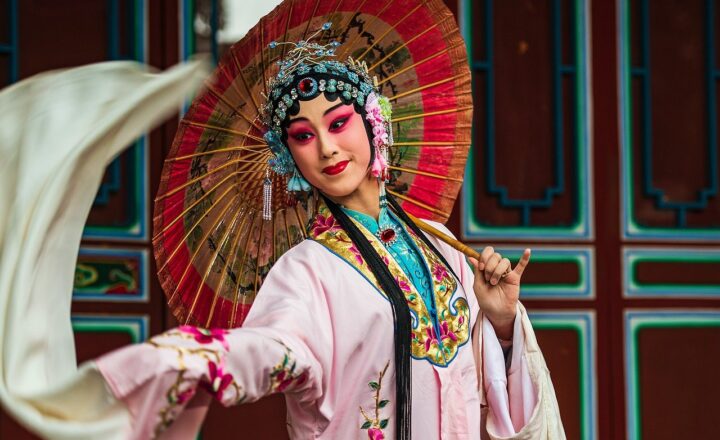The Surprising Origins of Karaoke: How Japan Created a Global Entertainment Phenomenon
November 15, 2024
Karaoke, a delightful blend of entertainment and social interaction, has transformed the landscape of leisure activities around the world. What started as a simple pastime in Japan has blossomed into an international sensation, capturing the hearts and voices of millions. Let’s take a deep dive into the fascinating origins of karaoke and explore how it emerged from humble beginnings to become a global phenomenon.
1. The Birth of Karaoke: A Look into Japan’s Musical Roots
The roots of karaoke can be traced back to the rich musical history of Japan. The term ‘karaoke’ itself is derived from two Japanese words: ‘kara’ meaning empty and ‘oke’ which is short for ‘okesutora’ or orchestra. It reflects the essence of karaoke – singing along to music without the vocals. This innovative form of entertainment began to take shape in the 1970s in a vibrant, music-loving environment.
In 1971, a musician named Daisuke Inoue, a bar owner in Kobe, Japan, developed the first karaoke machine. He created a reel-to-reel tape system that allowed patrons to sing along to their favorite tunes in his bar. Daisuke did not patent his invention; however, he unknowingly laid the groundwork for a revolution in entertainment.
Initially, karaoke was a niche affair, mainly enjoyed in local bars and small clubs throughout Japan. It offered a unique opportunity for people to unleash their creativity, socialize, and showcase their vocal talents.
2. The Growth of Karaoke: From Local Bars to Global Stages
As the 1980s rolled in, karaoke began to gain wider popularity across Japan. The novelty and fun of singing along to instrumentals captured the hearts of the Japanese public. The charm of karaoke was further amplified by the introduction of compact discs, which replaced the cumbersome tape systems.
Simultaneously, the concept of karaoke spread from Japan to neighboring countries, including China, Korea, and the Philippines. Karaoke bars started to sprout all over Asia, evolving into dedicated establishments where friends could gather, drink, and sing their hearts out.
The global spread didn’t stop there. By the late 1980s and early 1990s, karaoke had made its way to the U.S. and Europe, entering the cultural consciousness of countless music lovers. The first dedicated karaoke space opened in Los Angeles, and innovative karaoke machines began hitting the market, making it easier for anyone to enjoy karaoke at home.
3. The Technological Revolution: Advancements in Karaoke Systems
The karaoke phenomenon didn’t just stop at music bars; it also embraced advancements in technology. The introduction of digital karaoke machines revolutionized the entire experience. With the ability to store thousands of songs and customizable lyrics on screens, the accessibility of karaoke expanded dramatically.
In the 2000s, karaoke apps began to emerge, making it even easier to bring the experience into homes and gatherings. Smartphone applications now allow users to sing their favorite tracks anytime, anywhere. As a result, impromptu karaoke parties have become a common sight at social gatherings, family get-togethers, and nightlife venues across the globe.
4. Karaoke as a Cultural Phenomenon: Social Impact and Global Unity
More than just a leisurely activity, karaoke has become a cultural phenomenon, bridging gaps between generations and cultures. It serves as an incredible platform for self-expression, allowing people to showcase their personalities through music.
Furthermore, karaoke has been known to strengthen friendships and foster connections. Many studies suggest that singing together promotes bonding and enhances mental health. The act of performing, regardless of skill level, instills a sense of happiness and reduces feelings of anxiety and depression.
As karaoke found its footing globally, it also became an impressive tool for cultural exchange. With diverse songs representing various languages and traditions, karaoke encourages participants to explore and appreciate the music and cultures of others, fostering a sense of global unity. It allows individuals to step into the shoes of another nation through the universal language of music.
5. Karaoke Today: The Future of the Global Entertainment Scene
Today, the karaoke industry is a multi-billion dollar enterprise, generating significant revenue through clubs, equipment, and mobile apps. Major cities around the world have embraced karaoke, with many establishments developing unique themes and experiences to cater to specific audiences.
The popularity of reality TV shows, such as ‘American Idol,’ has also significantly contributed to reviving interest in performing arts, bringing karaoke into the limelight. Moreover, the rise of social media has encouraged people to share their karaoke adventures online, resulting in a new generation of enthusiasts.
But what does the future hold? With advancements in virtual reality (VR) and augmented reality (AR), karaoke could evolve into even more immersive experiences. Imagine singing alongside holographic renditions of your favorite artists or participating in a global karaoke competition streamed live to thousands of fans.
The global reach of karaoke continues to expand, showing no signs of slowing down. It will undoubtedly adapt and evolve alongside technological advancements and cultural shifts, remaining a beloved method of entertainment for generations to come.
Conclusion
Karaoke’s surprise origins in Japan have led to a dynamic global entertainment force that blends fun, creativity, and connection. From its simple beginnings in a small bar to its place as a beloved pastime around the world, karaoke has created lasting memories for millions.
As you grab your microphone and step into the spotlight, remember that karaoke is about more than just hitting the right notes; it’s about having fun, embracing spontaneity, and sharing laughter with friends. So, turn up the volume and let your voice be heard; after all, the world is your stage!







